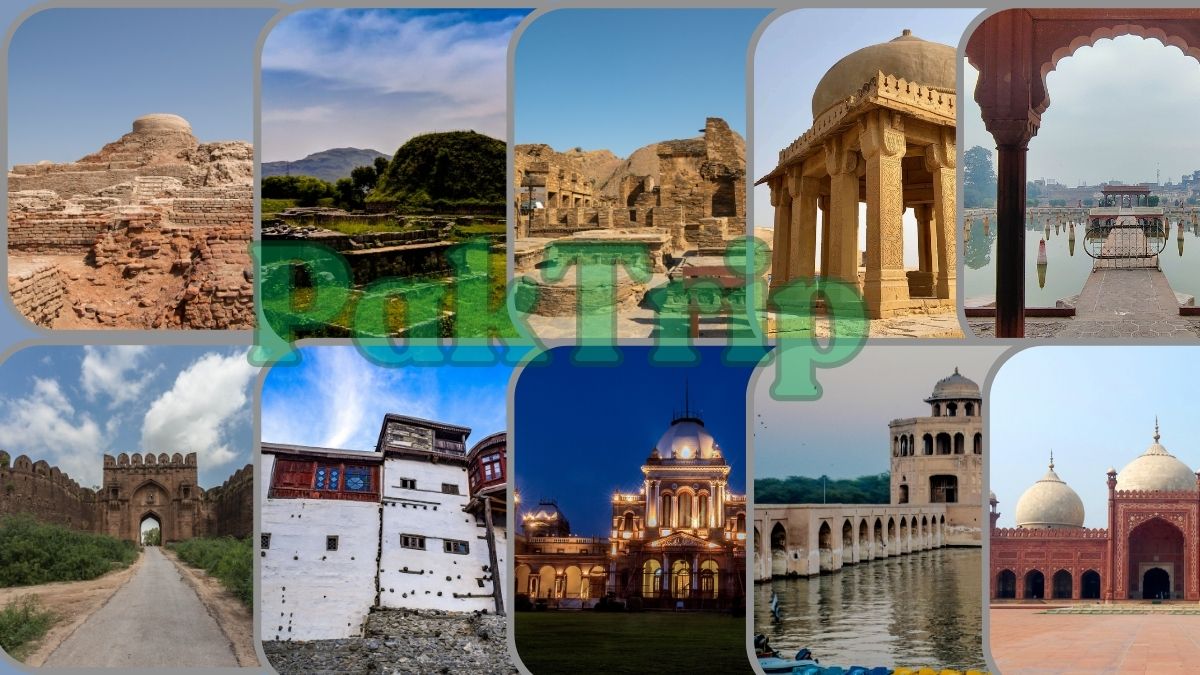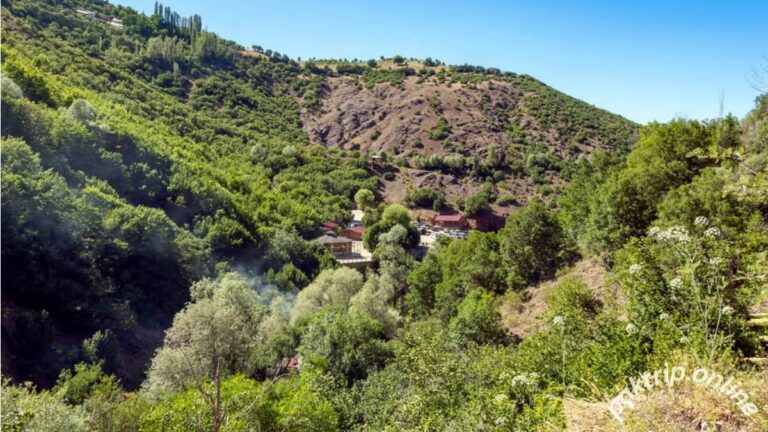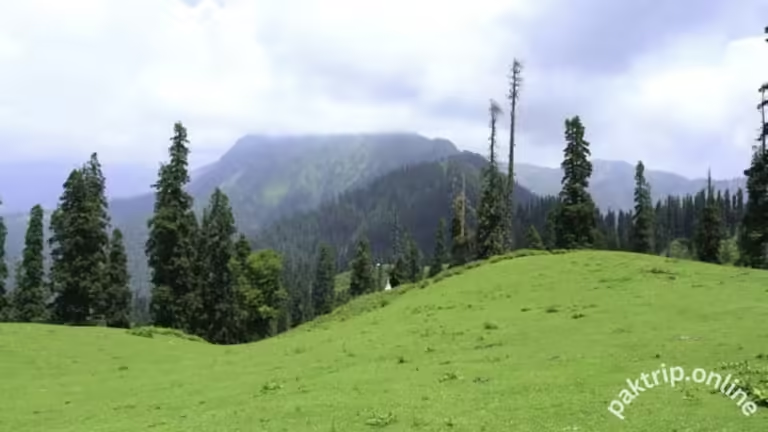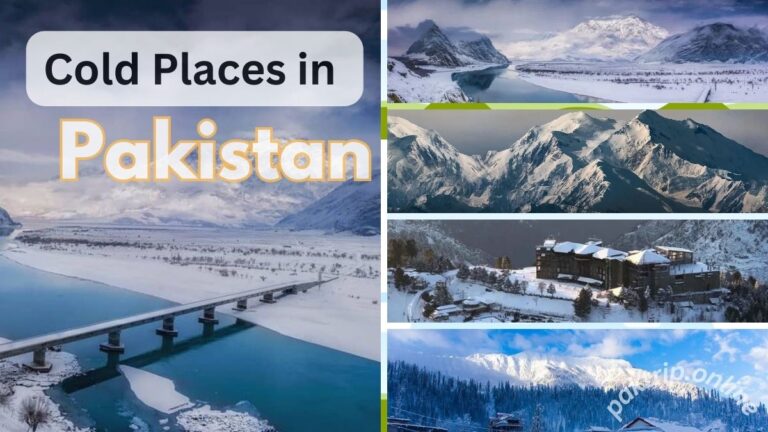Top 10 Must-Visit Historical Places in Pakistan
Explore the top 10 historical places in Pakistan, from Mohenjo-Daro to the Badshahi Mosque. Showcasing the rich cultural and historical heritage of the country.
Pakistan is a country blessed with a rich and fascinating history, culture, and beauty. From ancient civilizations to grand Mughal architecture, the country boasts a vast array of historical landmarks that tell the stories of the region’s past. These landmarks have endured through the ages, illuminating Pakistan’s rich and glorious heritage. Whether you’re a history buff or a traveler looking to experience the grandeur of old civilizations, visiting these places will leave you in awe.
10 Must-Visit Historical Places in Pakistan
Now let’s delve into the 10 Must-visit Historical places in Pakistan. Here are the top 10 historical places in Pakistan you must visit when exploring Pakistan.
Mohenjo-Daro – The Heart of the Ancient Indus Valley Civilization
One of the most important archaeological sites in the world, Mohenjo-Daro is located in the Sindh province of Pakistan. It was built around 2500 BCE as part of the Indus Valley Civilization, one of the earliest urban settlements in the world. The name “Mohenjo-Daro” translates to “Mound of the Dead,” and it is believed that this city was a hub of cultural, political, and economic activity during its time.
The city’s grid layout, advanced drainage system, and well-constructed buildings reflect a highly developed society. The Great Bath, granary, and assembly halls are among the main attractions for visitors. Mohenjo-Daro was abandoned around 1900 BCE, possibly due to changes in the course of the river or a shift in the region’s climate. Today, the ruins are a UNESCO World Heritage Site, and they offer a fascinating insight into ancient urban planning and life during the Indus Valley Civilization.
2. Taxila – An Ancient Crossroad of Culture and Religion
Situated near Islamabad and Rawalpindi, Taxila is another major historical site in Pakistan. It is an ancient city that dates back to the 6th century BCE and was once an important center of learning and culture. The city flourished under several empires, including the Achaemenid Empire, the Mauryan Empire, and the Kushan Empire.
Taxila’s significance lies in its role as a major center for Buddhism. Monasteries, stupas, and relics are scattered across the city, and the remains of these structures are awe-inspiring for those who are interested in religious history. It was at Taxila where the great Buddhist scholar, Chanakya, wrote the Arthashastra, an ancient Indian treatise on politics and economics. The Dharmarajika Stupa, Jaulian Monastery, and Sirkap are some of the most prominent ruins to explore. Declared a UNESCO World Heritage Site, Taxila continues to attract historians and tourists alike.
3. Takht-i-Bahi – The Glorious Buddhist Monastery
Located near Mardan in the Khyber Pakhtunkhwa province, Takht-i-Bahi is a well-preserved Buddhist monastery that dates back to the 1st century AD. Takht-i-Bahi means “throne of water,” reflecting its location on a hilltop near a stream. The site’s strategic position offers stunning views of the surrounding area, and its architectural complexity is a testament to the skills of ancient builders.
The monastic complex consists of stupas, meditation halls, assembly halls, and monks’ quarters arranged on the hillside. Takht-i-Bahi was a prominent Buddhist site until the 7th century when the region started embracing Islam. Despite the passage of time, many of the structures remain remarkably intact, allowing visitors to imagine what life was like for the monks who lived and studied here. In 1980, Takht-i-Bahi was declared a UNESCO World Heritage Site and is now one of the most visited archaeological sites in Pakistan.
4. Makli Necropolis – The City of Silence
Just outside Thatta in the Sindh province lies one of the largest graveyards in the world, Makli Necropolis. Spread over 10 square kilometers, this vast cemetery contains the tombs of kings, queens, saints, scholars, and noblemen who ruled the region between the 14th and 18th centuries. The site is a blend of Islamic and Hindu architecture, with tombstones that are intricately carved with geometric patterns, verses from the Quran, and floral designs.
Makli Necropolis is not just a graveyard but a cultural and historical treasure trove. The mausoleums reflect the artistic styles that prevailed during the Samma, Arghun, Tarkhan, and Mughal periods. Some of the most notable tombs include those of Jam Nizamuddin, Isa Khan Tarkhan, and Jan Baba. Makli was inscribed as a UNESCO World Heritage Site in 1981, and it continues to be a place of reverence, attracting visitors who are interested in the history and architecture of Sindh.
5. Lahore Fort and Shalimar Gardens – Mughal Masterpieces
Two prominent examples of Mughal-styled monuments in Pakistan are the Shalimar Gardens and the Fort of Lahore. The Lahore Fort, known as Shahi Qila, is a massive fortress that has been a symbol of power and authority since it was first built during the reign of Emperor Akbar in the 16th century. The fort features beautiful palaces, halls, and mosques that showcase the grandeur of the Mughal Empire. The Sheesh Mahal, or Palace of Mirrors, is one of the most famous structures within the fort, known for its intricate mirror work and stunning design.
Just a few kilometers from the fort, the Shalimar Gardens were built by Emperor Shah Jahan in 1641. The gardens are a masterpiece of Persian-style landscape architecture, with terraced levels, flowing water channels, and ornate pavilions. Both the Lahore Fort and Shalimar Gardens are UNESCO World Heritage Sites, attracting thousands of tourists every year who come to marvel at the beauty and history of the Mughal period.
6. Rohtas Fort – The Mighty Fortress
Located near the city of Jhelum, Rohtas Fort is a colossal structure built by the Afghan king Sher Shah Suri in the 16th century. The fort was constructed to thwart the return of Mughal Emperor Humayun to India after his defeat at the hands of Sher Shah Suri. Rohtas Fort is an architectural marvel, known for its massive walls, towering gates, and intricate designs. The fort covers an area of about 70 hectares and is surrounded by thick defensive walls that stretch for more than 4 kilometers.
The gates of Rohtas Fort, such as the Sohail Gate and the Shah Chandwali Gate, are stunning examples of military architecture, combining elements of Turkish, Afghan, and Indian styles. Inside the fort, there are several mosques, step-wells, and other structures that were used by the soldiers and residents of the fort. In 1997, Rohtas Fort was declared a UNESCO World Heritage Site and remains one of the best-preserved examples of 16th-century military architecture in South Asia.
7. Baltit Fort – The Jewel of Hunza
Situated in the breathtaking Hunza Valley in Gilgit-Baltistan, Baltit Fort is a majestic structure that has stood for over 700 years. The fort was the former residence of the rulers of Hunza and was strategically located to oversee the ancient trade routes passing through the region. Baltit Fort is perched on a hilltop, offering stunning views of the surrounding mountains and valleys, making it a popular tourist destination.
The architecture of Baltit Fort reflects a blend of Tibetan and Balti influences, with wooden beams and intricately carved stone walls. Over the centuries, the fort has been renovated several times, but it still retains its original charm. The fort was restored in the 1990s by the Aga Khan Trust for Culture, and today it serves as a museum that showcases the history and culture of the Hunza Valley. For anyone visiting northern Pakistan, a trip to Baltit Fort is a must to experience the rich heritage and natural beauty of the region.
8. Noor Mahal – The Royal Palace of Bahawalpur
In the heart of Bahawalpur, Punjab, lies Noor Mahal, a stunning palace built in 1872 by Nawab Sir Sadiq Muhammad Khan IV. The palace was designed in a blend of Islamic and European architectural styles, with grand halls, intricate frescoes, and beautiful gardens. Noor Mahal was initially built as a royal residence, but it is now open to the public as a museum.
The palace’s interior is as impressive as its exterior, with luxurious rooms adorned with chandeliers, vintage furniture, and paintings. The Noor Mahal is a testament to the grandeur and opulence of the Nawabs of Bahawalpur, and it remains one of the most popular tourist attractions in the region.
9. Hiran Minar – The Deer Tower
Located near Sheikhupura, Hiran Minar is a unique historical site built by Emperor Jahangir in 1606. The monument was erected in memory of Jahangir’s beloved pet deer, Mansraj. Hiran Minar features a 30-meter-high tower and a large water tank with a pavilion in the center. The site was used as a hunting ground by the Mughal emperors, and the tower served as a hunting lookout.
Hiran Minar is a beautiful example of Mughal-era architecture, with its symmetrical design and picturesque surroundings. The site is popular among locals and tourists who come to enjoy the peaceful ambiance and scenic views.
10. Badshahi Mosque – The Grandeur of Mughal Architecture
The Badshahi Mosque in Lahore is one of the most iconic landmarks of Pakistan. Built by Emperor Aurangzeb in 1673, the mosque is a stunning example of Mughal architecture. With its red sandstone structure, massive domes, and towering minarets, the Badshahi Mosque is a sight to behold. It was once the largest mosque in the world and can accommodate up to 55,000 worshippers in its vast courtyard.
The mosque’s interior is equally impressive, with intricate marble inlay work and delicate frescoes that adorn the walls and ceilings. The Badshahi Mosque is not just a place of worship but a symbol of Pakistan’s rich Islamic heritage. It remains one of the most visited historical sites in the country.
Conclusion
From ancient civilizations to the grandeur of the Mughal Empire, Pakistan is home to some of the most remarkable historical sites in the world. These top 10 historical places in Pakistan offer a glimpse into the country’s rich past, making them essential destinations for any traveler seeking to explore Pakistan’s cultural and historical heritage.







